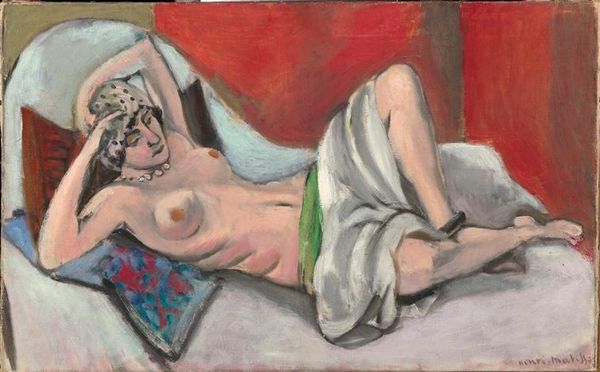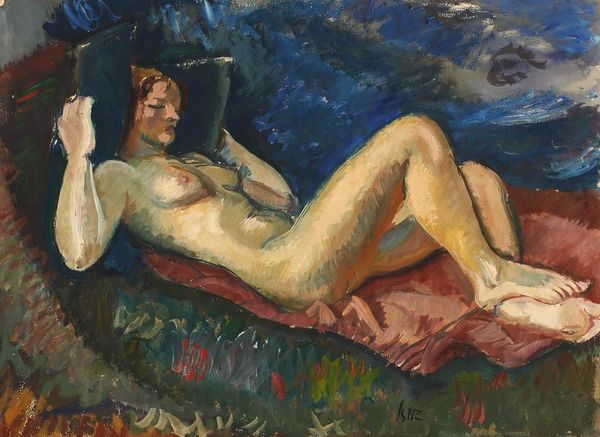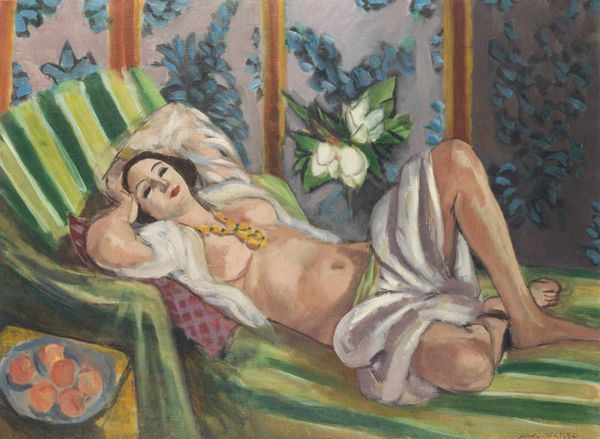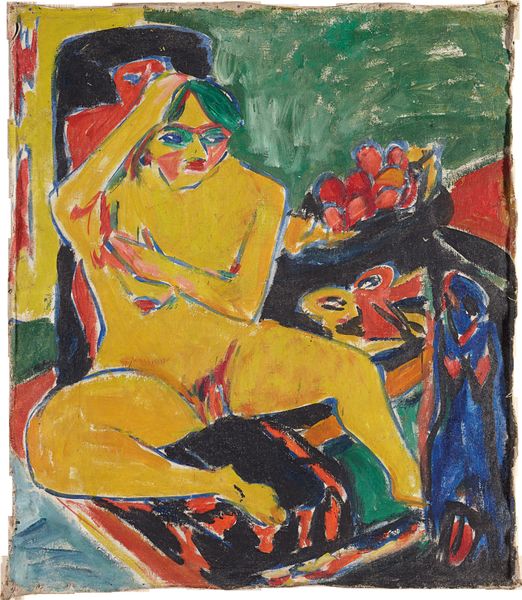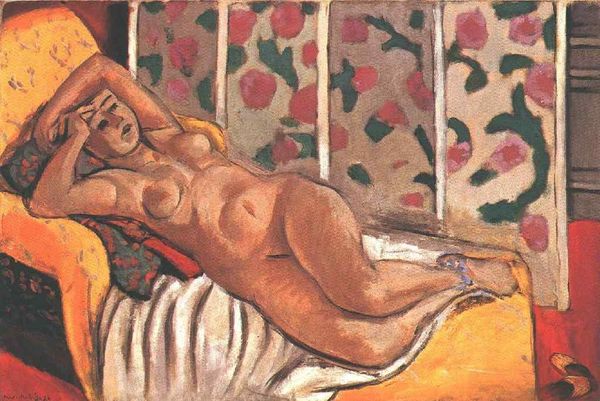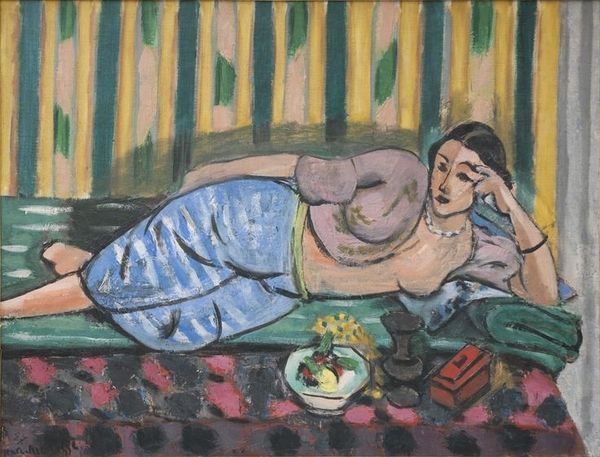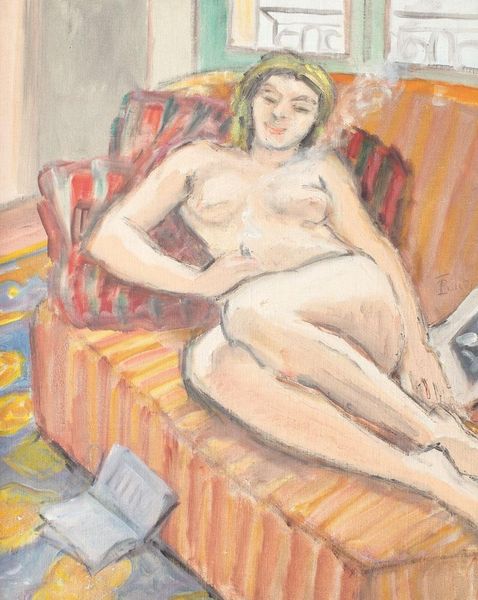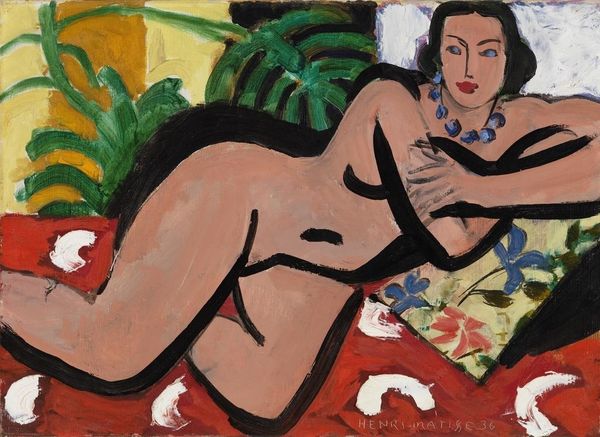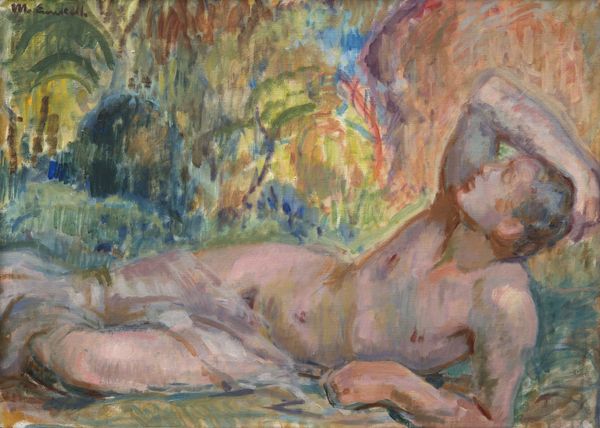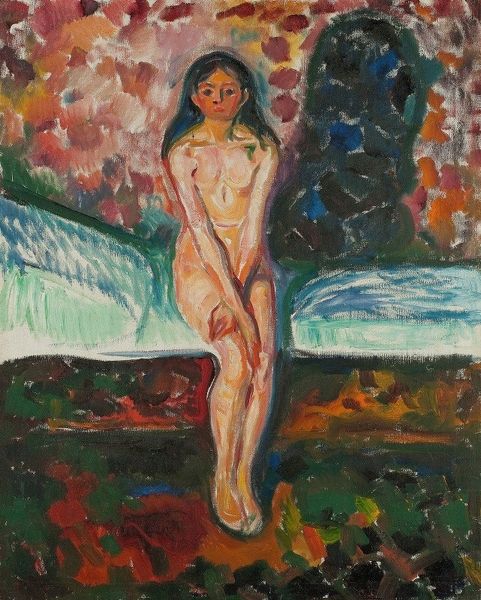
Copyright: Henri Matisse,Fair Use
Curator: My first thought? Dreamy. Almost unsettlingly peaceful, you know? Editor: Right! That might come from knowing that we're looking at Matisse's "Nu Aux Jambes Croisées," painted in 1936. It’s an oil on canvas. Seeing this reclining nude, all rosy hues and loose brushstrokes…it’s pure Matisse. Curator: Those limbs seem almost boneless. And it feels as if she’s merged with that leafy background; nature, the woman, interior space all bleed into one another. Did Matisse see women like an extension of the natural world around him? Editor: Certainly the era informed it. There was a significant fascination in France in the early 20th century, reflected across popular culture, for seeing women, especially women of color, as exotic. The reality of life in the French colonies was hardly as carefree as depicted. So that tropical backdrop can’t just be taken as, say, an interest in a botanical still-life study. It evokes broader politics. Curator: Politics simmering under the surface of a nude! I see it, but I can almost let it slip my mind because that line, that Matisse line, is so distracting! He gets to the heart of form with such economy. Like, did he even blink while painting those legs? So casual, yet so perfectly rendered. Editor: Exactly. Consider the period’s fixation on the female nude – how Matisse's treatment subverts the traditional male gaze through those fluid contours and softened colors. Her agency, even in repose, challenges typical representations of women as passive subjects. The post-impressionist world still considered it novel. Curator: Mmm, "agency in repose"...I should get that embroidered on a pillow. I love that. It’s what the painting evokes! But zooming back to technique: Notice the background. All those greens! It feels almost unfinished but utterly resolved. Editor: Matisse, even in a piece that looks effortless, reveals a keen understanding of spatial relationships. How color alone, particularly that lush, dominant green, pushes and pulls the eye across the canvas, blurring distinctions, forcing dialogue… Curator: Exactly. What can begin as a voyeuristic piece grows with its openess. We start asking deeper questions that are so very resonant. Thank you, Henri. Editor: Indeed. Its placement, this particular work, provides crucial conversations for the moment, about modernism’s often-overlooked contexts.
Comments
No comments
Be the first to comment and join the conversation on the ultimate creative platform.
